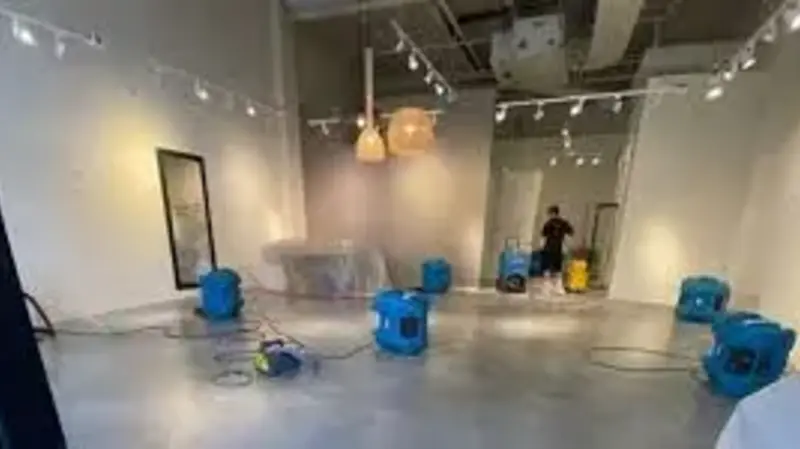Understanding the Dangers of Mold in Texas Homes
Mold is a persistent issue in Texas due to the region’s humid climate, which creates an ideal environment for mold growth. From hidden leaks to high humidity levels, Texas homes often battle moisture, leading to mold infestations. Left unchecked, mold can damage structural integrity and present serious health risks, especially to those with respiratory conditions or weakened immune systems. Common symptoms of mold exposure include coughing, skin irritation, and sinus congestion. Therefore, it’s crucial for Texas homeowners to understand the process of mold remediation and take the necessary steps to ensure a safe and healthy living environment.
Identifying Mold in Your Texas Home
To begin effective mold remediation, it’s essential to know what you’re dealing with. Mold often appears in areas with excessive moisture, like bathrooms, kitchens, basements, and areas around leaks. Here are some signs to watch for:
- Visible Mold Growth: Mold often appears as green, black, white, or even orange spots on walls, ceilings, or floors.
- Musty Odor: Mold produces a distinct, musty smell. If you notice this scent, there’s likely mold nearby.
- Water Damage: Stains, bubbling paint, or discoloration are indicators of water damage, which is a breeding ground for mold.
- Health Symptoms: Persistent allergy symptoms, such as coughing or sneezing, can be a sign of mold in your home.
Texas homeowners should regularly inspect areas prone to moisture buildup to catch mold growth early. The quicker you identify mold, the easier and less costly the remediation process will be.
The Mold Remediation Process
Mold remediation involves a comprehensive process of removing mold, cleaning the affected areas, and taking preventive measures to stop mold from returning. Here’s an in-depth look at each step:
1. Inspection and Assessment
Before any remediation begins, a thorough inspection is necessary to assess the extent of the mold growth. Mold remediation professionals use specialized tools, such as moisture meters and infrared cameras, to identify hidden mold.
2. Containment of the Mold
To prevent mold spores from spreading during the cleanup process, affected areas are sealed off. This containment typically involves plastic sheeting and negative air chambers that ensure mold particles don’t move to other parts of the home.
3. Filtration
Using advanced filtration systems, remediation experts filter the air to capture microscopic mold spores. HEPA (High-Efficiency Particulate Air) vacuums and air scrubbers are commonly used in this stage to purify the air in the affected area.
4. Removal of Mold-Infested Materials
In some cases, materials such as drywall, insulation, or carpeting need to be removed if they’re extensively contaminated. Porous materials are particularly susceptible to mold and may need to be disposed of, while non-porous surfaces can often be treated and saved.
5. Cleaning and Sanitization
Professionals use specialized cleaning agents to disinfect surfaces. For non-porous materials like glass or tile, mold can be removed with appropriate cleaners, while porous materials may require a more extensive cleaning or replacement. Items like furniture, curtains, and personal belongings will also need to be thoroughly cleaned to prevent recontamination.
6. Restoration
After mold removal, the final step is restoring the affected areas to their original condition. This can involve replacing drywall, repainting, or performing structural repairs. Restoration ensures that your home is not only mold-free but also structurally sound and visually appealing.
Choosing the Right Mold Remediation Company in Texas
Selecting a reputable mold remediation company is critical to ensuring the mold is fully eliminated and that preventative measures are effectively implemented. Here are some factors to consider:
- Certification: Look for companies with certifications from organizations like the Institute of Inspection, Cleaning and Restoration Certification (IICRC). Certified professionals are trained to follow industry-standard practices.
- Experience: Given Texas’s unique climate, choose a company familiar with local conditions and experienced in handling mold issues specific to the region.
- Transparent Pricing: Reputable companies provide clear estimates and breakdowns of costs. Avoid companies that offer vague pricing structures or pressure you into unnecessary services.
- Positive Reviews: Look at reviews and testimonials from previous clients to ensure the company has a strong track record of successful mold remediation projects.
Preventing Mold Growth in Texas Homes
Preventing mold from returning is as important as the remediation process itself. With Texas’s humid environment, homeowners need to implement proactive measures to control moisture and humidity. Here are effective ways to prevent mold growth in your home:
1. Control Humidity Levels
Using dehumidifiers, especially in high-moisture areas like bathrooms and basements, can reduce humidity levels and make it harder for mold to thrive. Aim to keep indoor humidity below 60%, ideally between 30-50%.
2. Proper Ventilation
Ensure adequate ventilation in moisture-prone areas by using exhaust fans, especially in bathrooms and kitchens. Allowing fresh air to circulate helps to lower humidity and discourage mold growth.
3. Repair Leaks Immediately
Regularly check your home for leaks in areas like the roof, basement, and plumbing. Fix any leaks immediately to prevent moisture buildup, which provides an ideal environment for mold to grow.
4. Use Mold-Resistant Materials
When renovating or building, consider using mold-resistant drywall, insulation, and paint. These materials are specifically designed to resist moisture and discourage mold growth, making them ideal for Texas homes.
5. Monitor Indoor Plants
While indoor plants are beneficial for air quality, overwatering them can create excess moisture, which promotes mold growth. Use well-draining pots, and avoid overwatering to prevent mold from forming in the soil.
Health Risks Associated with Mold Exposure
Mold can have a range of effects on health, from minor irritations to severe respiratory problems. Texas residents, especially those with allergies, asthma, or immune issues, should be aware of the risks associated with mold exposure. Common health risks include:
- Respiratory Issues: Mold spores can irritate the lungs, causing breathing problems and aggravating conditions like asthma.
- Allergic Reactions: Mold exposure often leads to allergy symptoms, including sneezing, itchy eyes, and nasal congestion.
- Skin Irritations: Mold can cause skin rashes and irritation, especially for those with sensitive skin or pre-existing skin conditions.
- Headaches and Fatigue: Prolonged exposure to mold can lead to chronic fatigue and headaches, impacting overall well-being.
For families with vulnerable individuals, such as children or elderly members, keeping mold levels under control is essential to maintaining a safe, healthy living space.
Mold Remediation vs. Mold Removal: Understanding the Difference
It’s essential to understand the distinction between mold remediation and mold removal. Mold remediation is a comprehensive process aimed at reducing mold levels to a safe amount, while mold removal suggests complete elimination, which is often impossible. In humid climates like Texas, a small amount of mold may always exist in the air, but remediation ensures it does not pose a health risk or cause property damage.
DIY Mold Removal Tips for Texas Homeowners
For minor mold issues, homeowners may choose to tackle mold removal themselves. Here are some effective DIY tips for safely removing mold from small areas:
- Use Protective Gear: Wear gloves, goggles, and a mask to protect yourself from mold spores.
- Ventilate the Area: Open windows or use fans to help circulate fresh air while cleaning.
- Clean with Vinegar or Baking Soda: White vinegar and baking soda are both effective for cleaning small mold patches. Apply directly to the area and scrub with a brush.
- Dispose of Contaminated Materials: If items are too contaminated or porous to clean effectively, dispose of them to prevent recontamination.
However, if mold covers more than 10 square feet or recurs after cleaning, it’s best to contact a professional mold remediation service.
Why Mold Remediation is Essential for Texas Homes
With Texas’s high humidity and frequent storms, mold issues are a common problem for homeowners. Mold remediation ensures a clean, safe home environment, protecting both the property and the health of its inhabitants. Proactively preventing mold growth can also help preserve the value and longevity of your home.
Conclusion
Mold remediation is an essential process for maintaining a safe and healthy home environment, especially in a humid state like Texas. Left untreated, mold can cause structural damage to your property, negatively impact indoor air quality, and pose serious health risks to your family. Through a thorough inspection, containment, and professional remediation, you can effectively remove mold and safeguard your home against future infestations.
For Texas homeowners, regular maintenance and moisture control are key to preventing mold from taking root. By investing in proper ventilation, addressing leaks promptly, and monitoring humidity levels, you can significantly reduce the chances of mold growth. When in doubt, consult with certified mold remediation experts who can accurately assess the situation and provide customized solutions to ensure a mold-free home. Contact us for more details visit our site.
Mold may be a persistent issue in Texas, but with proactive measures and professional support, you can protect your property and loved ones from its damaging effects. For anyone dealing with mold concerns, taking action sooner rather than later is the best approach to preserving both your home and health.



